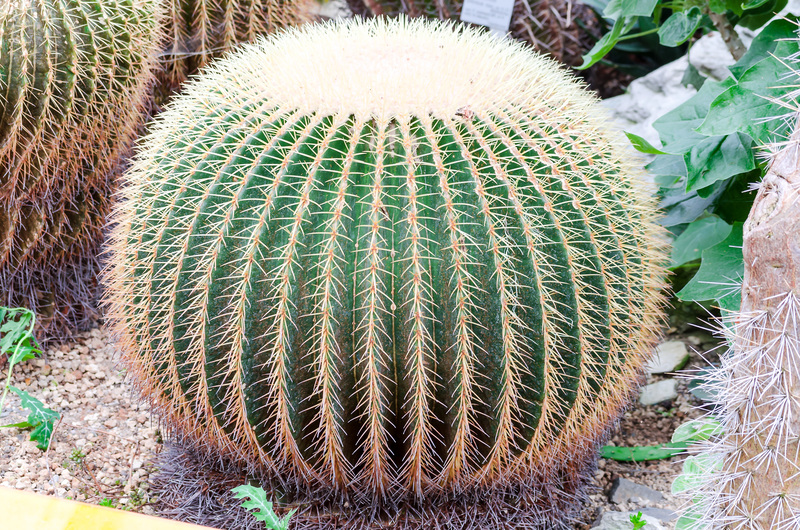Comprehensive workbook on orchid care techniques
Posted on 19/05/2025
Comprehensive Workbook on Orchid Care Techniques
Unlock the secrets to lush, vibrant orchids with our in-depth guide to orchid care methods. Whether you're a beginner hoping to grow your first Phalaenopsis or a seasoned collector aiming to perfect your cultivation skills, this comprehensive workbook on orchid care techniques is designed to deepen your understanding and ensure orchid success.
Introduction to Orchid Care
Orchids are among the most captivating of flowering plants, renowned for their exotic beauty and remarkable diversity. The family Orchidaceae boasts thousands of species and hybrids, each with unique needs and spectacular blooms. However, many growers find orchid care daunting. This workbook aims to demystify the process by providing step-by-step instructions and actionable tips for all key aspects of orchid plant care.
- Understanding Orchid Varieties
- Mastering Watering Techniques
- Finding the Best Light Conditions
- Optimizing Humidity and Air Circulation
- Pest and Disease Management
- Repotting and Fertilization Methods

1. Getting to Know Your Orchid Species
The first and most crucial step in orchid care is identifying your orchid species or hybrid. Each genus, from the beginner-friendly Phalaenopsis (moth orchids) to elegant Cattleya and striking Dendrobium, has specific needs:
Popular Orchid Types and Their Needs
- Phalaenopsis: Prefer warm conditions and moderate light. Perfect for windowsills.
- Cattleya: Need bright, indirect sunlight and regular airflow to flourish.
- Dendrobium: Thrive in strong light and like a more distinct wet-dry cycle.
- Oncidium: Enjoy cooler temperatures and high humidity.
Take the time to research or identify which species you have before proceeding with specific care routines. This step ensures you don't overwater, under-light, or misuse fertilizers, which can hinder growth and flowering.
2. Watering Techniques for Healthy Orchids
One of the most frequent challenges orchid gardeners face is mastering the right watering habits. Orchids are prone to rot if kept too wet but will dry out and fail to thrive if watered too infrequently. This section of the workbook covers:
Effective Orchid Watering Methods
- Check the Potting Medium: Only water when the medium is dry to the touch for most varieties, especially epiphytic orchids grown in bark or moss.
- Watering Frequency: Generally, once a week is sufficient, but adjust based on your environment's temperature and humidity.
- Water Quality: Use tepid, filtered, or rainwater when possible. Avoid soft tap water high in salts and chlorine.
- Drainage: Ensure all water drains thoroughly from the pot. Never let orchids sit in standing water.
Worksheets: Keep a watering log for your orchids. Record the date, method used (soak, trickle, spray), and environmental conditions to establish a routine tailored to your home.
3. Lighting Requirements for Orchids
Proper lighting is essential for orchid blooming. However, needs vary considerably between species. This section in our comprehensive workbook on orchid care techniques provides a detailed guide to balancing light intensity and duration:
Identifying the Right Light for Your Orchid
- Low Light Orchids: Phalaenopsis and Paphiopedilum thrive near an east or north-facing window.
- Medium to High Light Orchids: Cattleya and Dendrobium require brighter, filtered sunlight--ideally a south or west window with sheer curtain protection.
Tip: If leaves are dark green and plants rarely flower, increase the light. If leaves turn yellowish or burn, decrease exposure immediately.
4. Creating the Ideal Humidity and Air Circulation
Orchids naturally thrive in humid, breezy environments. Replicating this in your home or greenhouse will boost their vitality. In this workbook section:
How to Maintain Orchid Humidity
- Humidity Trays: Set pots on trays filled with pebbles and water to raise ambient moisture without waterlogging roots.
- Misting: Light, frequent misting of leaves can refresh plants, but avoid soaking flowers or pooled water at the crown.
- Room Humidifiers: These are particularly useful in arid climates.
Improving Air Circulation
- Fans: Gentle, oscillating fans prevent mold and strengthen plants. Keep airflow indirect to avoid dehydration.
- Open Windows: When possible, open windows for fresh air, but shield orchids from direct drafts.
5. Fertilizing Your Orchids: Best Practices
To support steady growth and abundant blooms, orchids need fertilization, but improper feeding can damage roots and foliage. Use these proven techniques:
Choosing the Right Orchid Fertilizer
- Type: Use a balanced fertilizer (such as 20-20-20) formulated for orchids.
- Frequency: Feed "weakly, weekly"--diluting liquid fertilizer to one-quarter to half the recommended strength every week.
- Flush: Rinse pots with plain water every month to remove salt and mineral buildup.
Worksheet for Fertilization Scheduling
Keep a calendar or spreadsheet to note feeding dates and observe how blooms respond over time. Adjust based on visible results.
6. Repotting Orchids: Methods & Timing
Over time, orchid roots outgrow their pots or the medium breaks down, risking root rot. This section provides clear, illustrated steps on how and when to repot your beloved orchids.
Repotting Guidelines
- Repot every 1-2 years, ideally after flowering.
- Select a pot just large enough for new root growth, with multiple drainage holes.
- Use a fresh orchid bark mix, sphagnum moss, or appropriate medium.
- Gently remove old medium, trim dead roots with sterile scissors, and settle the orchid securely in its new home.
Tip: Don't fertilize immediately after repotting--let roots adjust for a couple of weeks first.
7. Orchid Pest and Disease Management
Even the most attentive orchid grower may occasionally encounter pests or diseases. This portion of the orchid care workbook provides proactive and reactive solutions:
Identifying Common Orchid Pests & Diseases
- Aphids, Mites, and Mealybugs: Remove by hand or treat with insecticidal soap.
- Fungal and Bacterial Infections: Ensure good airflow, trim infected tissues, and apply fungicide or bactericide as necessary.
- Root and Crown Rot: Prevent by using well-draining media and careful watering.
Worksheets: Log pest or disease outbreaks, date of treatment, and products used. This helps track patterns and effectiveness, improving future management.
8. Encouraging Orchid Re-blooming
One of the joys--and mysteries--of orchid care is coaxing your plant to flower again. Our workbook includes:
Troubleshooting for Poor Blooming
- Insufficient light is the top culprit--relocate to a brighter spot if necessary.
- Seasonal cues: Many types, such as Phalaenopsis, require a period of cooler nighttime temperatures to initiate spikes.
- Fertilize properly during the growth season for best results.
- Prune dead spikes to redirect energy to new blooms.
9. Advanced Orchid Care Workbooks and Resources
As your confidence and skill grow, you may want to delve deeper into specific challenges, such as propagation, mounting orchids, or caring for less common species. This section lists recommended books, websites, societies, and local workshops to expand your orchid knowledge.
- American Orchid Society: Excellent articles and local chapters for hands-on checkups.
- Online Communities: Forums and Facebook groups provide real-time advice and camaraderie.
- Local Orchid Shows: See prize-winning specimens and consult with master growers.

10. Orchid Care Worksheets - Track & Succeed
Throughout this workbook on orchid care techniques, you'll find printable worksheets and logs to help you:
- Track watering and feeding schedules
- Monitor bloom cycles
- Audit pest management efforts
- Set custom reminders for repotting and maintenance
Conclusion: Grow Healthy, Stunning Orchids with Confidence
Mastering orchid cultivation takes patience, observation, and a willingness to learn. But with the comprehensive strategies, worksheets, and insider tips found in this orchid care workbook, you'll be able to nurture orchids from tricky seedlings to magnificent bloomers. Track your progress, experiment with new techniques, and don't be afraid to reach out to the global orchid community for advice.
Remember: Every orchid is unique. With this resource, you can confidently tailor your care routine, overcome common challenges, and enjoy the unparalleled beauty that only orchids can bring to your home or garden.
Start your orchid-growing journey today--download our printable worksheets and bring your orchids to life with this expert workbook on orchid care techniques!

